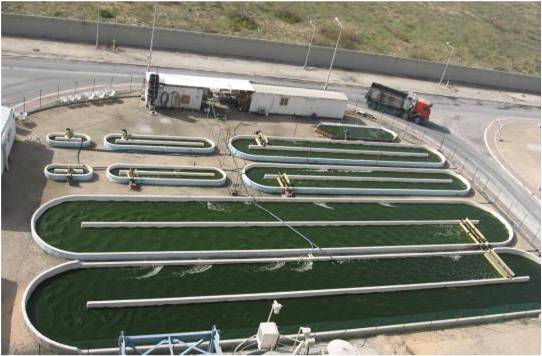


Measurement of Direct Nitrous Oxide Emissions from Microalgae Cultivation


Principal Investigators:
Associate Professor
Department of Mechanical Engineering
Colorado State University
Fort Collins, CO 80523-1374
Assistant Professor
Department of Mechanical Engineering
Colorado State University
Fort Collins, CO 80523-1374
Rationale
Microalgae are being evaluated as an alternative feedstock for biofuels based on high productivity potential, non-arable land requirements, and low and poor quality water requirements. Direct N2O emissions from microalgae cultivation could represent a major environmental impact given the high global warming potential of N2O (298 CO2eq). Quantifying the direct N2O emissions from microalgae cultivation as well as determining factors that influence N2O production are critical for proper environmental assessment of microalgae based biofuels. Theoretical calculations using the Intergovernmental Panel on Climate Change (IPCC) standards for terrestrial crops (1% of available nitrogen is converted into N2O) suggest the potential for significant levels of N2O (up to 120 ppm) for the experimental system presented.
Objectives of this Study
In this study cultivation techniques were used to simulate microalgae growth in photobioreactors (inert headspace) and open raceway ponds (air headspace). N2O emissions were quantified by sampling headspace gases every 8 hours and subsequent analysis with a Fourier Transform Infrared (FTIR) spectrometer.
Results to Date
The results indicate that when the headspace was initially purged with nitrogen gas (simulating a closed photobioreactor), the N2O emissions were significant during dark periods, and negligible during light periods. When repeated with atmospheric air in the headspace (to simulate open raceway ponds), N2O emissions were negligible for both dark and light periods. It was determined that N2O production was stimulated by anaerobic conditions when bio-available nitrogen was present in the growth media, indicating that the production of N2O is due to denitrifying bacteria. This production pathway was verified by a decrease in N2O production when dissolved oxygen concentrations remained above 4 mg•L-1 as well as with the introduction of antibiotics to the algal media. The proposed pathway was further verified by DNA extraction and PCR amplification of the denitrifying gene norB. The results of this study show that N2O emissions can be significant depending on the cultivation technique and must be considered in future Life Cycle Analyses
Project Personnel
Kelly Fagerstone, Grad Student
Last Updated: April 20, 2011